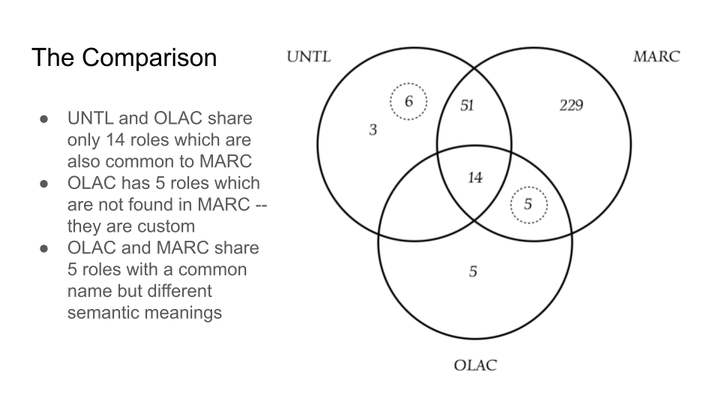Contributor Roles in a Mixed Archive

Abstract
Many archives (PARADISEC, ELAR, Pangloss, AILLA) operate as standalone units. This affords them the opportunity to make decisions about controlled vocabularies used within their information systems. Assumptions about the independent nature of preservation and memory organizations have characterized much of the scholarly discussion regarding language documentation metadata. Less discussed is the growing number of language resource collections which are embedded within digital repositories at memory institutions with a broader preservation focus. If institutions with broadly scoped missions are to equally participate in supporting language revitalization and language documentation efforts, then metadata for describing language resources needs to be able to be drawn from controlled vocabularies used across the broader cultural heritage industry. The OLAC Roles (Johnson 2006) and the MARC relator terms (MARC 2024) are two such vocabularies.
We present on contributor roles as they are implemented in an archival collection at an institution which has language resource and non-language resource collections and requires metadata to be conformant within the larger context across all collections. We have compared three sets of contributor roles (OLAC, 24 terms, MARC, 299 terms, and our institutional terms, 74 terms). When comparing OLAC terms with MARC terms, we show that 10 of the 24 terms have compatibility issues. Six are in the context of their semantics, and four have no equivalence. We then analyzed our institutional terms for congruence with MARC and found that 3 of 74 terms were locally created and not part of the MARC relator vocabulary. Finally, we analyzed which of the roles in our local systems were compatible with the OLAC role vocabulary. There are only 14 comparable roles between our local metadata vocabularies and the OLAC role vocabulary. Of these roles, three have semantic issues between the terms used and the definitions expected between the metadata namespaces.
References
- Johnson (2006)
- Johnson, H. (2006). OLAC Role Vocabulary. Open Language Archive Community. Retrieved from http://www.language-archives.org/REC/role.html
- (2024)
- (2024). Relator Code and Term List – Term Sequence: MARC 21 Source Codes. Library of Congress. Retrieved from https://www.loc.gov/marc/relators/relaterm.html
Categories:
Content Mediums: